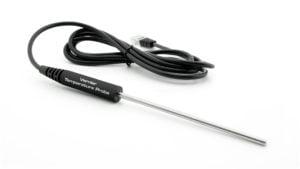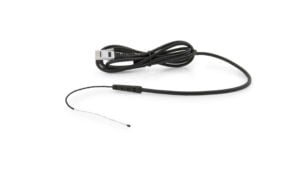For the past decade, Vernier technology has been a valuable asset to North Kansas City Schools (NKC Schools) as we have looked for ways to immerse students in the scientific discovery process and make real-world connections. This summer, however, provided an opportunity to utilize the technology in a unique and exciting way when NKC Schools found itself in the path of 100% totality during the August 21st solar eclipse. We immediately looked to Vernier technology to make the eclipse a meaningful and once-in-a-lifetime learning experience for staff and students.
As part of our district-wide planning for the eclipse, we purchased 21,000 pairs of Vernier eclipse glasses so that all of our students and staff could safely view the phenomenon. All of our 30 elementary, middle, and high schools planned special events for the day. Our educators found creative ways to make the scientific phenomenon a cross-curricular learning experience for students. For example, students read cultural explanations of eclipses throughout history in social studies classes, read myths about eclipses and wrote their own myth in English classes, and calculated the rate of rotation and the period of rotation for the sun in math classes. Students also completed to-scale solar system races in physical education classes and created eclipse-inspired pieces of art in art classes. On the day of the event, many of our middle and high school science educators led data-collection activities using Vernier technologies before, during, and after the eclipse.
Throughout the day, students asked questions, collected and analyzed data, and drew conclusions. Rather than merely graphing potential meaningless data provided to them, which can be less engaging, students were truly immersed in the scientific discovery process, asking authentic questions and seeking to find the answers through the data they collected. As our district’s Science Instructional Coordinator, Jessica Nolin, said, “We got to witness 20,000-plus students and their teachers all being real scientists at the same time—it was phenomenal!”
“We got to witness 20,000-plus students and their teachers all being real scientists at the same time—it was phenomenal!”
Students used a variety of Vernier sensors to collect and analyze eclipse-related data. Some used Vernier temperature probes to monitor temperature changes during the eclipse, while others used UVA and UVB sensors to measure radiation levels, light intensity sensors to measure changes in light brightness, and anemometers to measure wind speed. Some students even used sound level sensors to monitor nature and animal noises throughout the entirety of the eclipse.
This experience was all made possible by making a shift to open education resources (OER) in our middle school science classes three years ago. While Vernier technologies have been a staple in our high school classrooms for many years, NKC Schools looked to expand the use of the technology to our middle school students. The OER shift saved the district a significant amount of money on textbook purchases. Part of the money saved was reallocated to outfit our five middle schools with Vernier LabQuest 2 data-collection devices, as well as a wide variety of sensors.
Vernier technology continually allows our students to engage with scientific experiences that have deep meaning and purpose.



